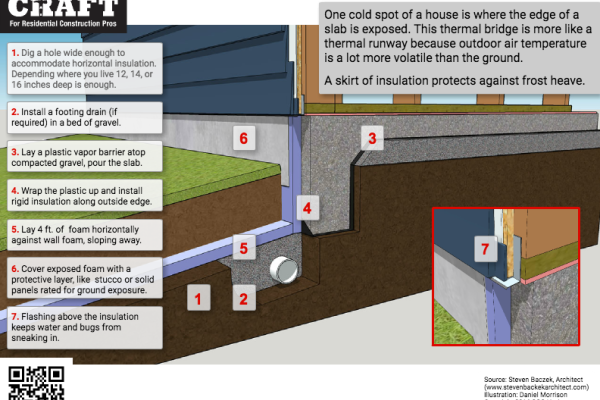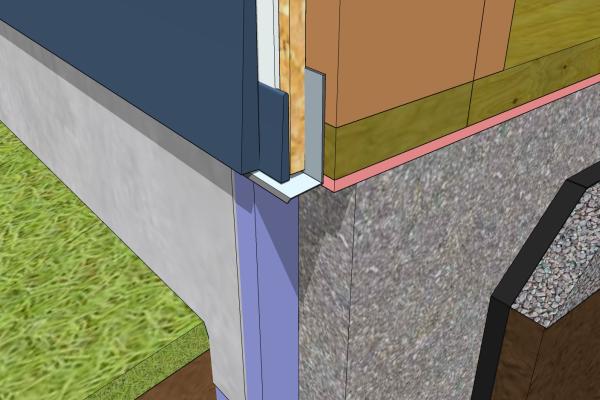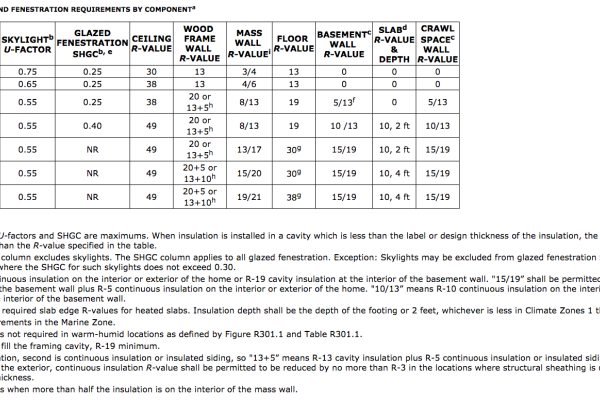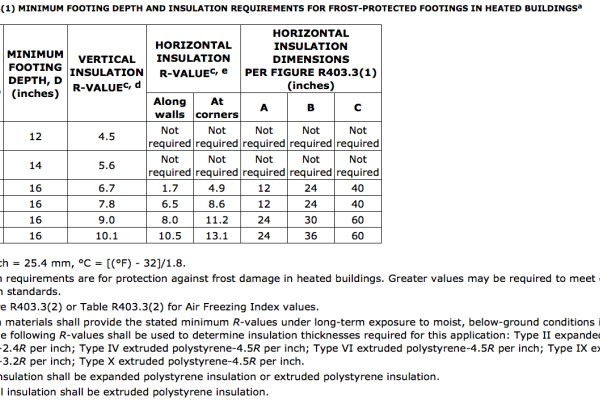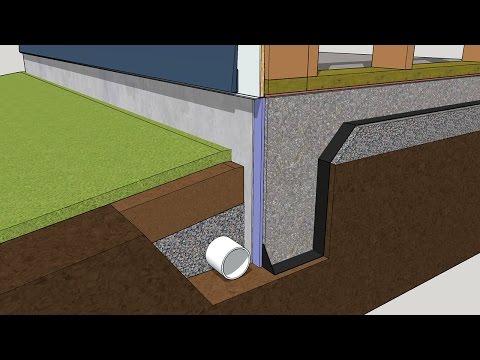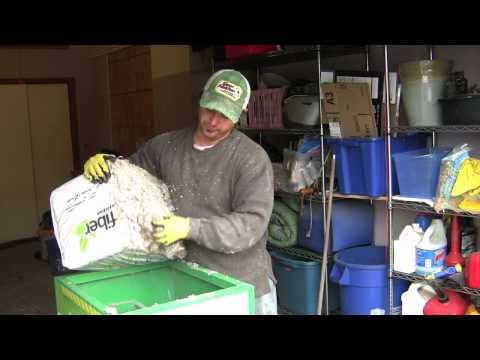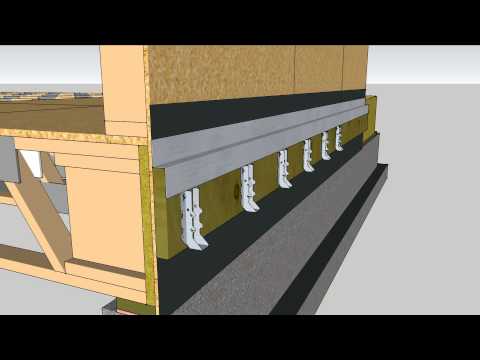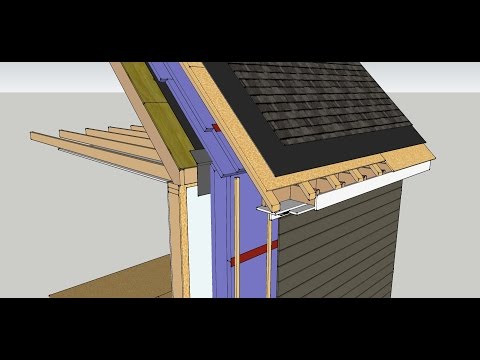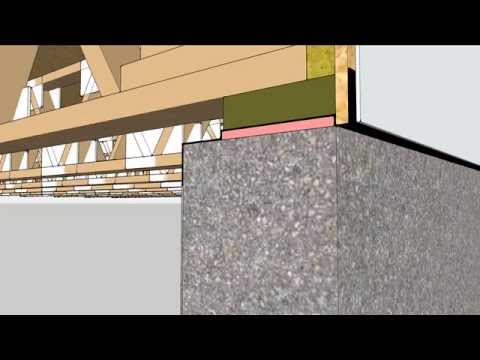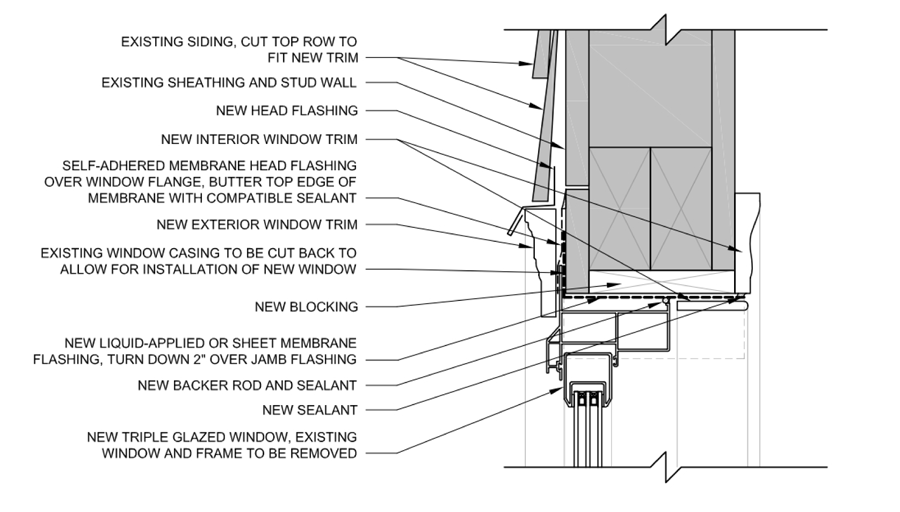An affordable insulated slab foundation suitable for climate zones 4, 5, and 6
One cold spot on a house is where the edge of a slab is exposed to the outdoors. This thermal bridge, is really more like a thermal runway because the outdoor air is a lot colder than the ground in winter, and hotter than the ground in summer.
No surprise that insulating the edges of slabs is one item on the Energy Star checklist.
Step-by-step guide to a frost-protected slab:
- Begin with a piece of ground big enough to dig a hole in, and dig that hole. A frost-protected slab does not need to be dug below the frost line, depending where you live, 12, 14, or 16 inches deep is enough (see chart below).
- A bed of compacted gravel caps the ground under the slab, and a drainage system should be installed in wet areas.
- Lay a plastic vapor barrier atop the compacted gravel and then pour the slab, adding rebar as required.
- Wrap the edge of the plastic up and install rigid foam insulation along the outside edge of the slab. This foam is about two inches thick, which is about R-10.
- Lay another board of foam horizontally over the drainage gravel, sloping away from the house. This piece should extend about four feet from the house to protect completely against frost heave.
- Cover the exposed foam with some sort of protective layer, such as a stucco or rigid panels suitable for ground contact.
- Backfill the hole, and frame the walls on top of the slab.
- A piece of flashing above the insulation keeps bugs and water from sneaking in.
- Install the OSB, WRB, and siding; plant grass, and then take lunch—confident that this slab will stay warm and dry for a long, long time.
